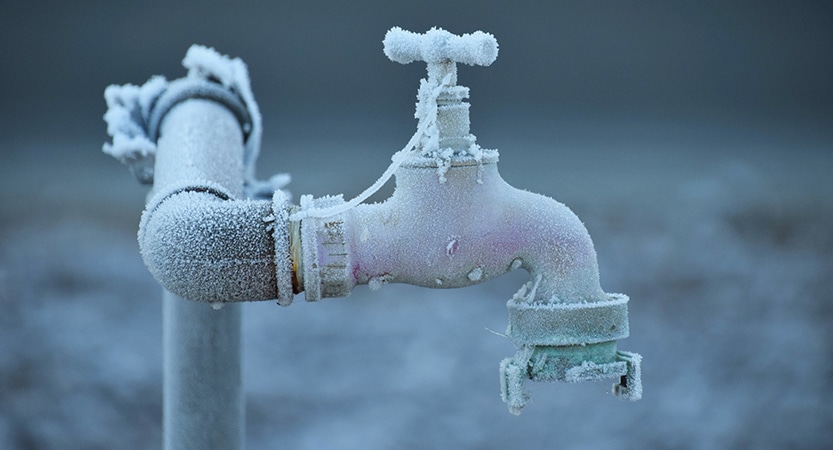Protecting Against Frozen Plumbing in Winter: Professional Advice
Protecting Against Frozen Plumbing in Winter: Professional Advice
Blog Article
How do you feel in relation to Helpful Tips to Prevent Frozen Pipes this Winter?

Cold weather can wreak havoc on your pipes, specifically by freezing pipelines. Right here's how to prevent it from taking place and what to do if it does.
Intro
As temperatures drop, the danger of frozen pipelines boosts, potentially leading to pricey repairs and water damages. Recognizing exactly how to prevent frozen pipelines is critical for home owners in cool environments.
Comprehending Icy Pipelines
What creates pipes to freeze?
Pipes freeze when revealed to temperatures listed below 32 ° F (0 ° C) for prolonged periods. As water inside the pipelines ices up, it expands, taxing the pipeline walls and potentially causing them to break.
Risks and problems
Frozen pipelines can cause supply of water disruptions, residential or commercial property damages, and expensive repair work. Ruptured pipes can flood homes and create comprehensive architectural damages.
Signs of Frozen Piping
Identifying frozen pipelines early can prevent them from rupturing.
Just how to identify frozen pipes
Try to find lowered water flow from faucets, unusual smells or sounds from pipelines, and noticeable frost on revealed pipelines.
Avoidance Tips
Shielding prone pipes
Wrap pipelines in insulation sleeves or use warmth tape to secure them from freezing temperature levels. Focus on pipelines in unheated or outside areas of the home.
Home heating methods
Keep indoor areas sufficiently heated up, especially locations with plumbing. Open up cabinet doors to permit warm air to flow around pipes under sinks.
Securing Exterior Pipes
Garden hose pipes and exterior faucets
Detach and drain pipes yard tubes prior to winter months. Set up frost-proof faucets or cover outdoor taps with insulated caps.
What to Do If Your Pipelines Freeze
Immediate actions to take
If you think icy pipelines, maintain taps available to ease pressure as the ice thaws. Utilize a hairdryer or towels soaked in warm water to thaw pipelines slowly.
Long-Term Solutions
Structural modifications
Consider rerouting pipelines far from outside wall surfaces or unheated areas. Add additional insulation to attics, cellars, and crawl spaces.
Updating insulation
Purchase top notch insulation for pipes, attic rooms, and wall surfaces. Correct insulation helps preserve constant temperatures and lowers the threat of frozen pipes.
Conclusion
Stopping icy pipelines needs proactive actions and quick reactions. By comprehending the causes, indications, and preventive measures, house owners can shield their pipes throughout winter.
5 Ways to Prevent Frozen Pipes
Drain Outdoor Faucets and Disconnect Hoses
First, close the shut-off valve that controls the flow of water in the pipe to your outdoor faucet. Then, head outside to disconnect and drain your hose and open the outdoor faucet to allow the water to completely drain out of the line. Turn off the faucet when done. Finally, head back to the shut-off valve and drain the remaining water inside the pipe into a bucket or container. Additionally, if you have a home irrigation system, you should consider hiring an expert to clear the system of water each year.
Insulate Pipes
One of the best and most cost-effective methods for preventing frozen water pipes is to wrap your pipes with insulation. This is especially important for areas in your home that aren’t exposed to heat, such as an attic. We suggest using foam sleeves, which can typically be found at your local hardware store.
Keep Heat Running at 65
Your pipes are located inside your walls, and the temperature there is much colder than the rest of the house. To prevent your pipes from freezing, The Insurance Information Institute suggests that you keep your home heated to at least 65 degrees, even when traveling. You may want to invest in smart devices that can keep an eye on the temperature in your home while you’re away.
Leave Water Dripping
Moving water — even a small trickle — can prevent ice from forming inside your pipes. When freezing temps are imminent, start a drip of water from all faucets that serve exposed pipes. Leaving a few faucets running will also help relieve pressure inside the pipes and help prevent a rupture if the water inside freezes.
Open Cupboard Doors
Warm your kitchen and bathroom pipes by opening cupboards and vanities. You should also leave your interior doors ajar to help warm air circulate evenly throughout your home.

We are very interested in How to prepare your home plumbing for winter weather and I'm hoping you appreciated the new blog entry. If you please take a moment to promote this post if you appreciated it. Thank you for being here. Come back soon.
Pricing Report this page